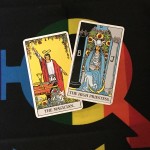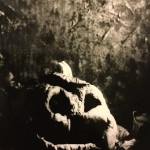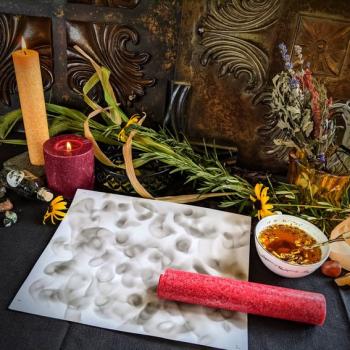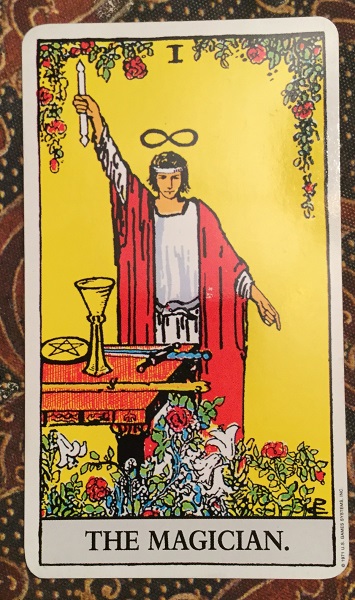
The Magician or Magus has always been my favorite tarot card. Naturally, as a magical practitioner it is the one whose symbolism I resonate with the most. I was intrigued to discover during research for my last article, that the Magician we all know and love wasn’t always part of the Tarot as we know it. I am not an expert on Tarot history or symbolism so it was very interesting for me to find out that there was an older corollary to the Magus of the Modern Rider-Waite Deck whose images have become a universal part of tarot language.
According to research the tarot was likely invented in northern Italy in the 15th century from where it migrated to Southern France and Switzerland. In France the Tarot de Marseille was a standard version. It is in this version from the 18th century that we see the older form of the Magician, Le Bateleur. Interestingly, this figure is defined as a “mountebank” which is a charlatain or sleight-of-hand artist. In this version of the tarot le Bateleur is close in imagery to the Fool.
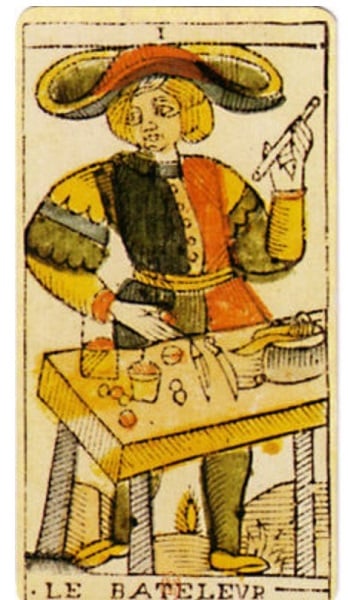
The image of Le Bateleur from Tarot de Marseille shares similarities with the Magician. In the late 1800s an occultist named Oswald Wirth created a new Tarot that followed the Marseilles model closely but in collaboration with the infamous Stanislas de Guaita, new occult symbolism was incorporated. Stanislas was a French poet, expert occultist, esotericist, and he reformed the Rosicrucian Brotherhood. Wirth was a Swiss occultist who studied with de Guaita. The Wirth/de Guaita deck was the first in a long line of occult decks.
Le Bateleur took his current form as the Magus or Magician. The balls and cups that once occupied his table were replaced by the four tools representing the suits of the minor arcana. In Paris, 1927 Wirth published Le Tarot de Imagiers du Moyen Age or the Tarot of the Magicians as it would be called in its English translation, which was first published in 1985. This book gives detailed correspondences to the symbolism in the tarot, including astrological, Kabbalistic, and Hebraic meanings.
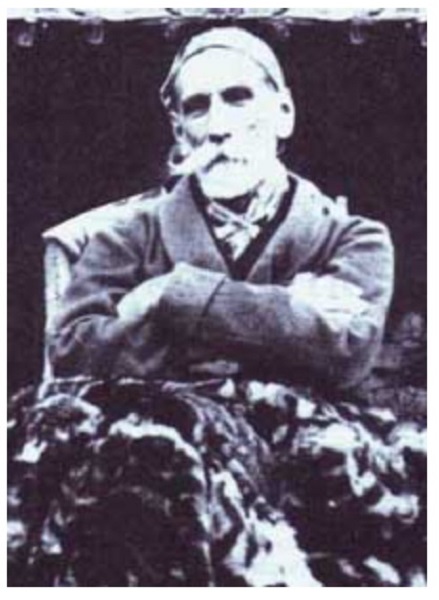
The Magician that is recognizable today from the Rider-Waite deck was developed by A.E. Waite for the Hermetic Order of the Golden Dawn in 1910. This design featured the symbolism we recognize in the Magician today, including the infinity symbol and the ouroboros around his waist. I am by no means an expert on the subject of tarot. I just thought this was an interesting piece of history that I wanted to share with you, and perhaps inspire further research.
Sources: http://en.m.wikipedia.org/wiki/Oswald_Wirth
http://en.m.wikipedia.org/wiki/The_Magician_(Tarot_card)
http://en.m.wikipedia.org/wiki/Tarot_de_Marseilles

